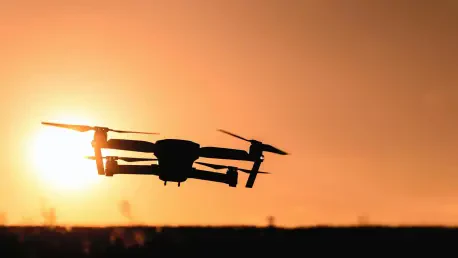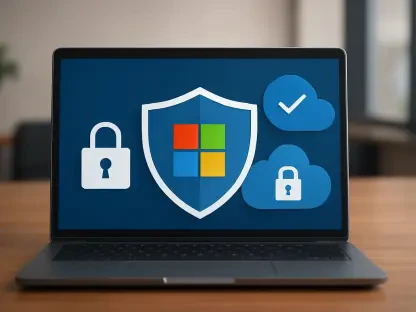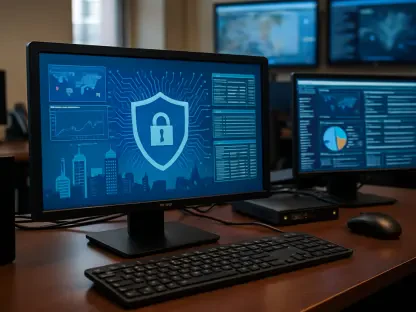Introduction
In a covert digital battlefield, state-sponsored hackers have infiltrated the systems of leading European drone manufacturers, siphoning off proprietary designs and manufacturing secrets to fuel their own military advancements. This alarming reality underscores the escalating threat of cyberespionage targeting drone technology, a cornerstone of modern warfare and industrial innovation. Drones, pivotal in both military operations and commercial applications, have become high-value targets for nations seeking strategic dominance, posing significant risks to global security and intellectual property. This analysis explores the surging trend of cyberespionage in drone tech, delving into its prevalence, real-world impacts through specific campaigns, expert insights on evolving threats, future implications for industries and geopolitics, and critical takeaways for stakeholders aiming to safeguard this vital sector.
The Rise of Cyberespionage Targeting Drone Technology
Growth and Prevalence of Cyber Threats in Drone Tech
Cyberespionage attacks on defense and technology sectors have surged in recent years, with drone manufacturing emerging as a prime target for state-sponsored actors. According to cybersecurity reports from firms like ESET, the frequency of such attacks has increased markedly, driven by the strategic importance of unmanned aerial vehicles (UAVs) in modern conflicts. The global drone market, encompassing both military and commercial uses, continues to expand rapidly, making it an attractive arena for espionage aimed at gaining technological and tactical advantages.
The adoption of drones across diverse applications, from surveillance to logistics, has amplified their appeal to malicious actors. Military drones, in particular, are integral to operations in conflict zones, prompting nations to seek shortcuts through stolen data rather than independent innovation. This trend is evident in the persistent targeting by groups such as the Lazarus Group, whose activities, as documented by cybersecurity experts, reflect a calculated effort to undermine competitors and bolster domestic capabilities.
A closer look at the threat landscape reveals that state-sponsored cyber operations often prioritize high-value sectors like drone technology over broader, less focused attacks. The scale of these efforts, often involving sophisticated malware and prolonged campaigns, highlights a shift toward precision targeting. This growing prevalence necessitates urgent attention to fortify defenses in an industry critical to national and economic security.
Real-World Examples of Cyberespionage in Action
One of the most notable instances of cyberespionage in drone technology involves the Lazarus Group, a North Korea-linked entity, and its Operation DreamJob campaign targeting European drone manufacturers. This initiative focused on stealing proprietary UAV data from companies in Central and Southeastern Europe, aiming to enhance domestic production capabilities. The campaign’s strategic intent aligns with broader geopolitical goals, particularly in supporting military advancements through illicit means.
The tactics employed in these attacks often exploit human vulnerabilities, with attackers using social engineering methods such as deceptive job offers to deliver malware. A key tool in this arsenal, a remote access Trojan known as ScoringMathTea, grants extensive control over compromised systems, enabling data theft and system manipulation. Such methods reveal a reliance on psychological manipulation to bypass technical defenses, targeting employees as the weakest link in the security chain.
Geopolitical motivations further contextualize these attacks, as targeted firms often supply drones to regions embroiled in active conflicts, such as Ukraine. The theft of cutting-edge technology in these contexts could alter military balances, providing adversaries with insights into advanced systems. These real-world cases underscore the tangible consequences of cyberespionage, extending beyond mere data loss to impact global security dynamics.
Expert Perspectives on Cyberespionage Challenges
Cybersecurity experts have sounded the alarm on the persistent and adaptive nature of threats targeting drone technology. Peter Kalnai, a senior malware researcher at ESET, has highlighted the consistent use of reliable tools like ScoringMathTea, which has remained largely unchanged since its inception due to its effectiveness. This stability in malware design suggests that threat actors often prioritize proven methods over constant reinvention, focusing instead on exploiting human error as a primary entry point.
Further insights reveal the sophisticated evasion techniques employed by these actors to avoid detection. Leveraging open-source platforms like GitHub to host malicious code and utilizing advanced DLL proxying libraries demonstrate a keen ability to adapt to evolving cybersecurity measures. Such tactics complicate efforts to track and neutralize threats, as attackers continuously refine their approaches to stay ahead of defenders in a cat-and-mouse game of digital warfare.
Experts also advocate for systemic changes to counter these challenges, emphasizing the need for robust employee training to recognize social engineering attempts. Beyond individual preparedness, there is a pressing call for policy reforms to mandate compliance with security advisories and lower thresholds for incident reporting. International collaboration is deemed essential to address gaps in defense mechanisms, ensuring that critical industries like drone manufacturing are not left vulnerable to state-sponsored threats.
Future Implications of Cyberespionage in Drone Technology
Looking ahead, cyberespionage targeting drone technology is likely to grow in sophistication, with attackers potentially expanding their focus to include commercial drone sectors alongside military targets. As drones become ubiquitous in industries like agriculture and delivery services, the scope of valuable data ripe for theft widens, creating new vulnerabilities. This evolution could lead to more diverse and complex attack vectors, challenging existing security frameworks.
Enhanced cybersecurity measures offer significant benefits, such as safeguarding intellectual property and reinforcing national security, but they come with hurdles like regulatory lag and resource limitations. Governments and companies must navigate the tension between rapid technological advancement and the slower pace of policy development, ensuring that defenses keep up with emerging threats. Balancing innovation with protection will be a key determinant of resilience in this domain.
The broader impact on geopolitics and global industries cannot be overlooked, as stolen drone technology could shift military advantages or disrupt supply chains dependent on UAVs. While risks abound, there is also an opportunity for innovation in defense mechanisms, spurred by the need to counter espionage. Collaborative efforts to develop cutting-edge security solutions could transform challenges into catalysts for progress, reshaping how critical technologies are protected in an interconnected world.
Conclusion and Call to Action
Reflecting on the past trajectory, the surge in cyberespionage targeting drone technology stands as a stark reminder of the vulnerabilities in critical sectors, with campaigns like Operation DreamJob exposing the audacity of state-sponsored actors. Experts consistently warn of the adaptive nature of these threats, while the potential for future escalation looms large over both military and commercial landscapes. The intersection of cyber threats with geopolitical stakes demands a proactive stance from all involved parties.
Moving forward, stakeholders—including governments, corporations, and cybersecurity professionals—must commit to actionable steps such as investing in advanced threat detection systems and fostering a culture of security awareness within organizations. Advocating for international frameworks to standardize incident reporting and response protocols emerges as a vital next step to close existing gaps. By prioritizing vigilance and collective action, the global community can build a fortified front against cyberespionage, ensuring that the promise of drone technology is not undermined by digital adversaries.









